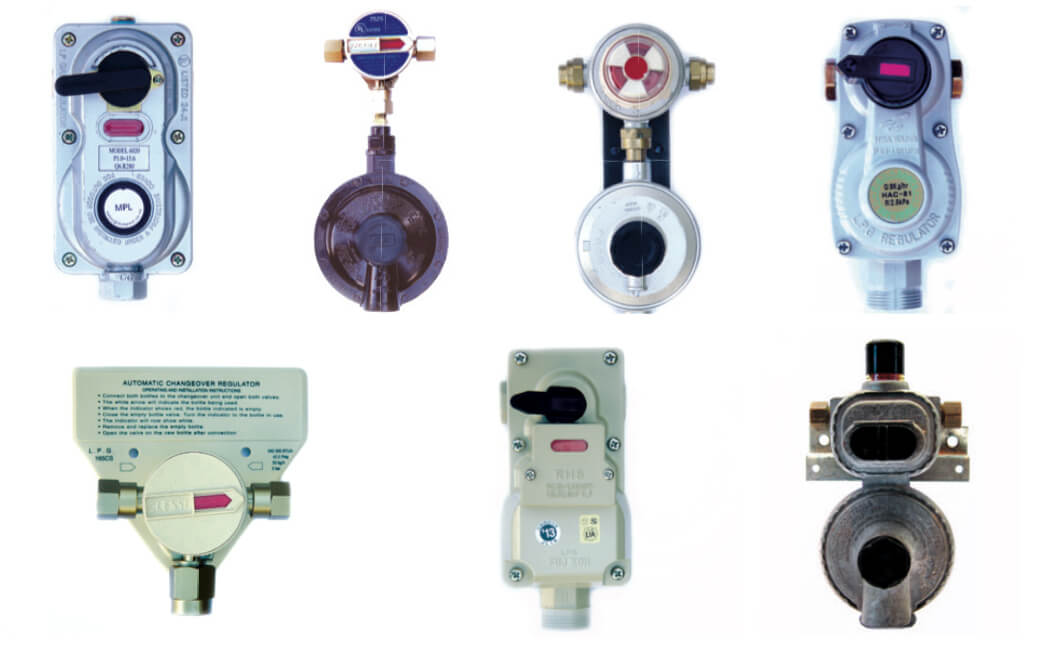LPG is a great source of energy for cooking, hot water and heating, and we want you to get the most out of your gas bottles by understanding how to use them safely.
Watch this video for tips on how to tell when it’s time to reorder, why it’s important to check your bottles once a week, and how to prepare your property for your Rockgas delivery.
Your bottles will be connected to a pressure regulator that is usually mounted on the wall in the centre of the bottles. The automatic regulator switches the empty bottle to the full one.
When to order a refill
When the viewing window on your regulator, located between your two bottles, is green or clear, there is LPG in both bottles.
When the viewing window has turned completely red, it means one bottle is empty and it is time to order a new bottle.
Automatic regulators
There are a few different types of automatic regulators, with slightly different systems for showing when a bottle is empty. If you have any queries, give us a call on 0800 762 542.

Handy hint… Don’t adjust the directional arrow pointing to an empty bottle – it shows us which one to replace when we come to do the changeover.
Testing level of LPG
You cannot test the level of LPG by shaking or tapping the bottle – you could damage the bottle in the process.
The level of LPG in the full bottle is just over three-quarters of the bottle’s height, allowing for the expansion of the LPG.
If you would like to check the level, use this safe and accurate method:
- Pour warm water down the side of the bottle
- Wait a few moments
- Run your hand down the side of the bottle
- It will feel cool to the touch at the level of the LPG
Staying safe
We care about your safety. Click here for staying safe with LPG.
Bottle delivery information
Did you know that bottle exchange is done by one person? We take the health and safety of our staff very seriously so, if you are having LPG bottles delivered, there are a few safety non-negotiables you will need to consider.
Run outs
If you have completely run out of LPG and you are not home when we complete the delivery, our delivery person will turn both of your replacement cylinders OFF. This is done for safety reasons.
Obstacles
Are there any obstacles that would make it difficult to deliver and install a large gas bottle (1.3m high)? Trolley access over delicate or decorative surfaces should be avoided. Ideally, there should be a firm path for our delivery person.
House proximity
A full bottle weighs approximately 90kg! Can our delivery person get close enough to the side of the house to unload the bottle without putting themselves at risk of injury?
Stair access
If access by stairs cannot be avoided, stair risers need to be less than 200mm high, treads more than 200mm wide, and the total rise of the steps needs to be no more than 1.5m.
Steep or long driveway
Can your driveway handle heavy vehicles? Is it too steep, soft, narrow or slippery/lacking grip? Do you have a particularly long driveway? Is there room for a large vehicle to turn around?
If we cannot safely access your property for any reason, we will contact you and try to resolve the problem. We will also leave a card behind detailing the problem.
A few other simple things will make all the difference for our delivery person:
- Keeping your dog on a lead
- Making sure vegetation is trimmed back and safe
- Making sure steps and pathways are safe and secure
If you have any concerns, call us on 03 546 6336.
LPG pricing explained
The price you pay for LPG is influenced by a number of factors including international prices, exchange rates, transport and delivery costs, taxes and regulatory requirements.
Here are a few of the variables that can impact LPG pricing in New Zealand.
International LPG benchmark pricing
LPG is an internationally traded commodity. Even though New Zealand produces the majority of its annual LPG needs, international benchmark pricing is still used to determine what we pay for it. The international benchmark for the cost of LPG that we use in New Zealand is the Saudi Aramco Contract Price (Saudi CP), which changes monthly.
As the international price for LPG is calculated in US dollars, the exchange rate also affects what we pay for it in New Zealand.
Government regulation costs
Regulation costs set by the Government affects the price you pay for LPG. For example, the LPG industry has costs under the New Zealand Emissions Trading Scheme (NZ ETS). The NZ ETS puts a price on greenhouse gas emissions. It requires all sectors of New Zealand’s economy (except the biological emissions from agriculture) to report on their emissions, as well as purchase and surrender emissions units to the Government for those emissions.
Transport and logistics costs
Transport and logistics costs – moving the LPG from the oil and gas fields, refineries and importers, to our depots, and then trucking it to our customers – are a sizable component of the overall cost of LPG in New Zealand. These transport and logistics related costs factor in a whole lot of variables, including Government road taxes, refinery terminal fees, shipping costs, pipeline and intermediate LPG storage costs, and the distance from the local Rockgas depot to your location for delivery.